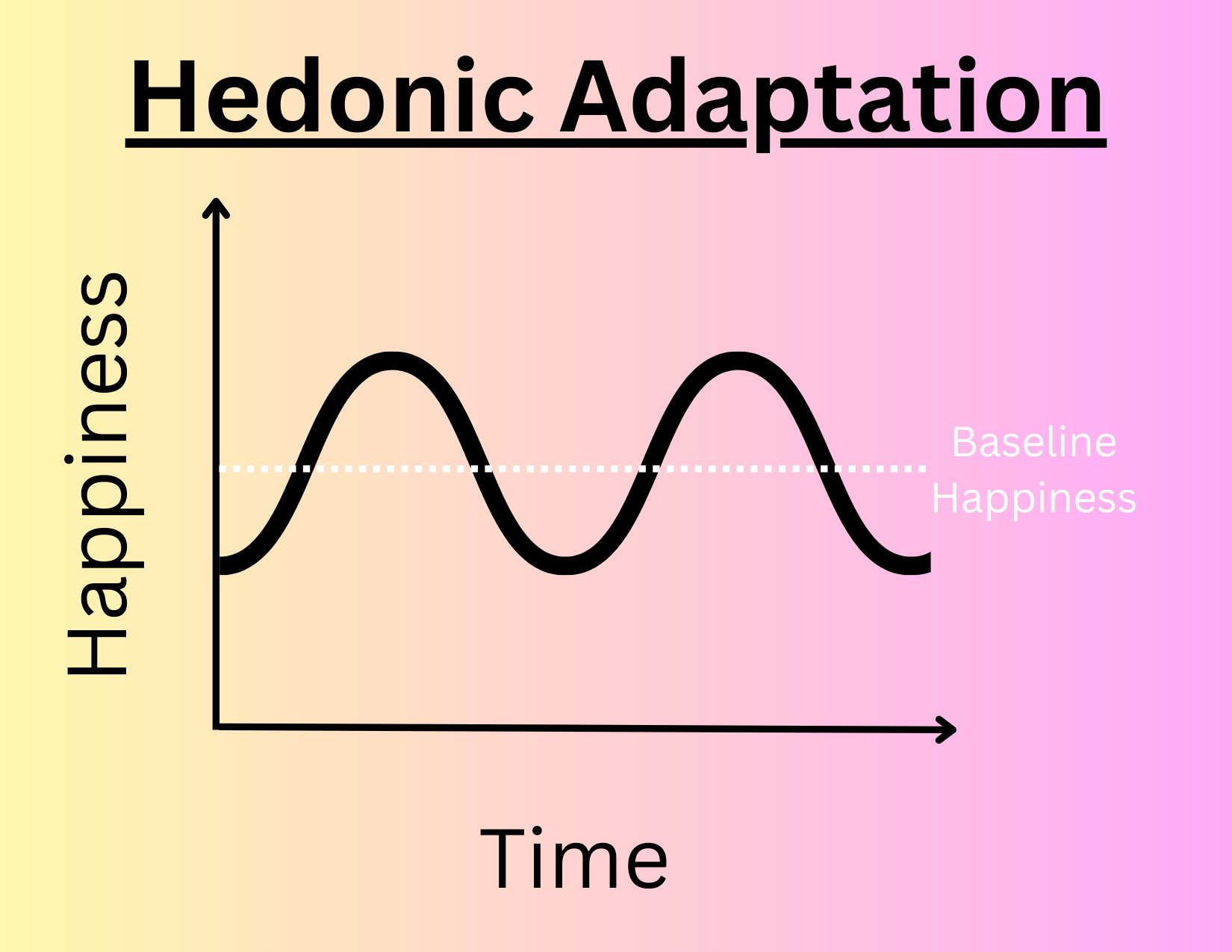Are you Climbing the Never-Ending Hedonic Treadmill?
Remember a time when you were daydreaming about how happy you’d be when you moved to a new area or bought that thing you’d been saving up for? And then it happened. And you did experience a burst of joy and excitement. But perhaps not for as long as you had anticipated. This phenomenon is what’s known as hedonic adaptation. It describes the cycle of returning to a steady, baseline level of happiness after some such positive, or indeed negative, event. Let’s take a closer look at how this works.
Happiness and the brain
As we know, the brain plays an important role in regulating our behaviors and emotions. The reward center in our brains is activated when dopamine is released in response to certain experiences. But did you know there is truth in the saying that too much of anything isn’t good for you?
The treadmill
Hedonic adaptation refers to the brain’s ability to adjust to pleasurable experiences and return to a baseline. Since dopamine is addictive, we constantly seek those events and actions which stimulate its release, yet the brain’s ability to continually adapt means that we are left in a constant cycle of chasing happiness, i.e. the hedonic treadmill.
Some people can even wear out the brain's pleasure centers in the continual search for the next hit of dopamine. This gives scientific meaning to the idea that material or external pleasures will never bring us true, lasting happiness.
Negative events
Interestingly enough, the phenomenon is a double-edged sword. It also seems that the brain is able to habituate to difficult experiences within our life over time. Whether it be a setback or even grief, the pain that is felt will usually at least dissipate over a period of time.
How to break the cycle
With that being said, we don’t have to be slaves to the process. There are ways to train your brain into experiencing longer-lasting happiness. Some of the most effective ways to do so include:
Gratitude practice: Actively incorporating gratitude into your daily life can actually slow down the process of hedonic adaptation.
Mindfulness: Similarly, research revealed that a regular mindfulness practice for those experiencing chronic pain increased the capacity for hedonic happiness.
Social connection: Another way to work against your brain’s ability to habituate your happiness levels is to prioritize time spent with others. A number of studies show that supportive and enduring relationships are one of the key factors in achieving lifelong happiness.
To summarize, hedonic adaptation indicates how our brains become less responsive to the same gratifying stimulus over time. But we can take a step off the hedonic treadmill by incorporating simple exercises such as mindfulness, gratitude, and social endeavors into our everyday lives.

